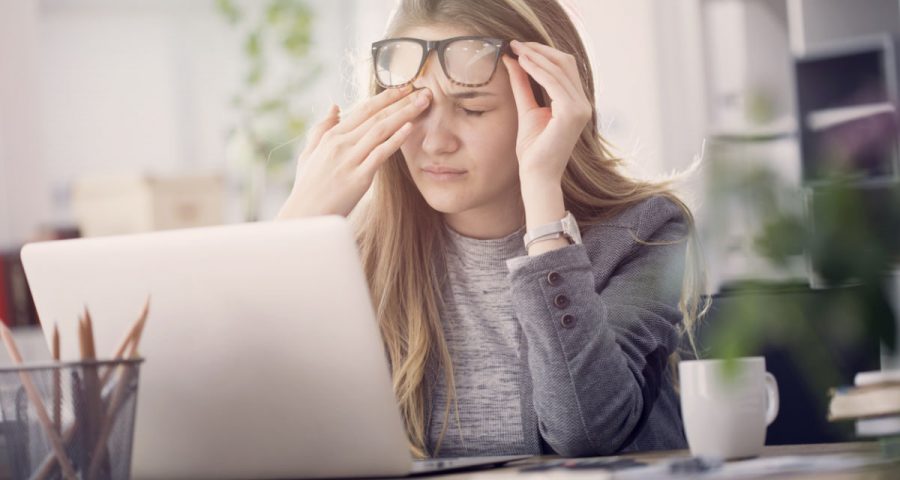The Invisible Assailant—Screen Fatigue
Young tired working woman at work
January 27, 2021
As COVID-19 forces students to spend more and more time in front of their computer screens, unintended consequences may be emerging.
Virtual learning is quickly becoming the norm for a large percentage of students throughout the state. This requires at least 5-6 hours of uninterrupted computer usage on weekdays, or 25-30 hours a week, a figure that does not account for homework or other time spent on devices. The prolonged screen time may be affecting students’ mental and physical health.
Screen fatigue, or asthenopia, is a condition that occurs after staring at an electronic device for long periods. Although most of the time this eye strain disappears after you rest your vision, it can be associated with worrying symptoms such as pain around the eyes, blurred vision, dry or watery eyes, light sensitivity, vertigo, migraines, or even nausea.
For example, Paula Zhuang, a junior at NPHS, has suffered from headaches concentrated behind the eyes after especially difficult school days. Junior Kiara Medeiros echoes this issue, stating that she recently had to “take an aspirin and then a two-hour nap” due to a migraine caused by screen time. Medeiros adds that the computer usage can even disrupt her sleep schedule, describing, “When I go home, I have to take a one to two hour break from screens before starting my homework. Then, I have to stay up late and finish.”
As a fully distance learner, senior Michaele Ramos reports similar but exacerbated difficulties: worsening eyesight, lights seeming “10x brighter” than they actually are, and “tremendously” increased frequency of migraines.
So, what can be done? Although the presence of COVID-19 means that some increased screen time is necessary, it would be beneficial for schools to offer a longer lunch or a short free period for a respite. Additionally, some tips supplied by Medeiros include buying blue light glasses, utilizing “Night Mode,” lowering brightness, and using eye drops. Ramos adds that it can be helpful to shut off all screens during lunchtime, walk her dog, go on “weekly escapades like hikes,” and print out assignments. As a whole, students should rest their eyes as much as possible—away from a screen.
Although electronic devices have all but taken over our lives, it is important to step away once in a while—your health will thank you for it.
